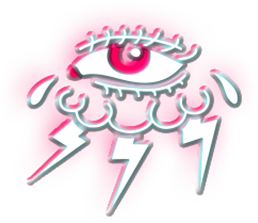Buggy Love Potion: The Science of Insect Sex Hormones
Listen up, you sexy six-legged sirens and alluring arthropods! 🐞💋
Get ready to have your mind blown and your exoskeleton rocked. Insect sex hormones: They’re real, they’re spectacular, and they’re changing the game of love in the miniature world! From ecdysone’s double life to gonadotropins’ matchmaking skills, these hormones are the unsung heroes of insect reproduction. 🎉🦋
You thought mammals had all the fun with their SRY and DMT1? Ha! We’ve got news for you, honey. Insects are packing some serious hormone heat, and it’s time to set the record straight! 🔥
Let’s start with the star of our show: ECDYSONE. This isn’t your grandma’s hormone, oh no! When ecdysone’s feeling frisky (read: present in high concentrations), it transforms into the Christian Grey of the insect world – a powerful ANDROGENIC SEX STEROID. That’s right, this bad boy is turning boy bugs into the Casanovas of the garden! 🕺🐛
But ecdysone isn’t done yet, folks. Like a hormonal Jekyll and Hyde, it shape-shifts into 20-OH-ECDYSONE, the MOULTING hormone that’s giving insects everywhere their sexy new exoskeletons. And for all you VITELLOGENIC females out there, 20-OH-ecdysone is your go-to ESTROGEN equivalent. Talk about a hormone wearing multiple hats! 👒🎩🧢
Now, let’s buzz over to the brain-gonad love connection. GONADOTROPINS are the ultimate wingmen, secreted by the brains of female locusts and mosquitoes, and even male gypsy moths. These tiny matchmakers are turning insect gonads into hormone hotspots that would make any mammal blush. 🧠🏭
But wait, there’s more! Remember the firefly Lampyris and the hevea tussock moth Orgyia? These little lovebugs were the OG subjects of classical endocrinology, proving that insects have been playing the hormone game all along!
And let’s not forget our crustacean cousins. The isopod Armadillidium is serving up some serious ANDROGENIC HORMONE realness, showing that sex determination isn’t just for vertebrates anymore!
For all you gene geeks out there, feast your compound eyes on this: the similarity between mammalian steroidogenic factor 1 (SF-1) and Drosophila’s fushi tarazu factor 1 (FTZ-F1) is giving us major evolutionary déjà vu. Looks like insects and mammals might have more in common in the bedroom than we thought! 🧬🔍
So next time you see two bugs getting cozy, remember – there’s a whole lot of hormonal hullabaloo happening behind those compound eyes! 👀💕
Bibliography:
De Loof, A., & Huybrechts, R. (1998). “Insects do not have sex hormones”: a myth? General and comparative endocrinology, 111(3), 245-260.
Nijhout, H. F. (1994). Insect hormones. Princeton University Press.
Wyatt, G. R., & Davey, K. G. (1996). Cellular and molecular actions of juvenile hormone. II. Roles of juvenile hormone in adult insects. Advances in insect physiology, 26, 1-155.
Riddiford, L. M. (2008). Juvenile hormone action: a 2007 perspective. Journal of insect physiology, 54(6), 895-901.
Swevers, L., & Iatrou, K. (2003). The ecdysone regulatory cascade and ovarian development in lepidopteran insects: insights from the silkmoth paradigm. Insect biochemistry and molecular biology, 33(12), 1285-1297.
Charniaux-Cotton, H., & Payen, G. (1985). Sexual differentiation. The biology of Crustacea, 9, 217-299.
Suzuki, Y., & Riddiford, L. M. (1991). Ecdysteroid-dependent expression of a retrotransposon, gypsy, during metamorphosis of Manduca sexta epidermis. Developmental biology, 148(1), 18-30.


Leave a Reply